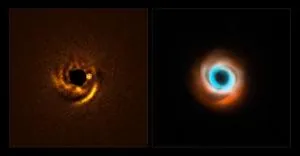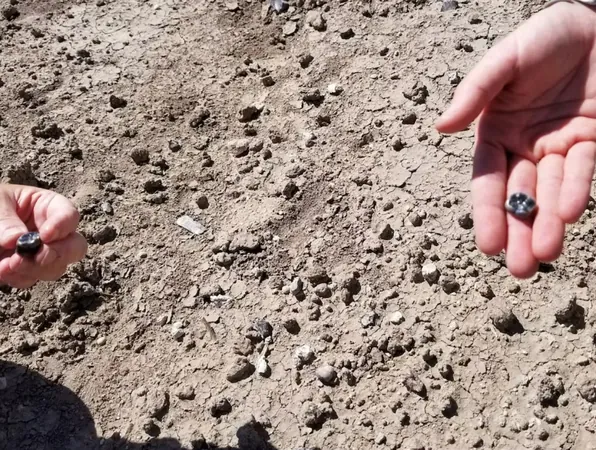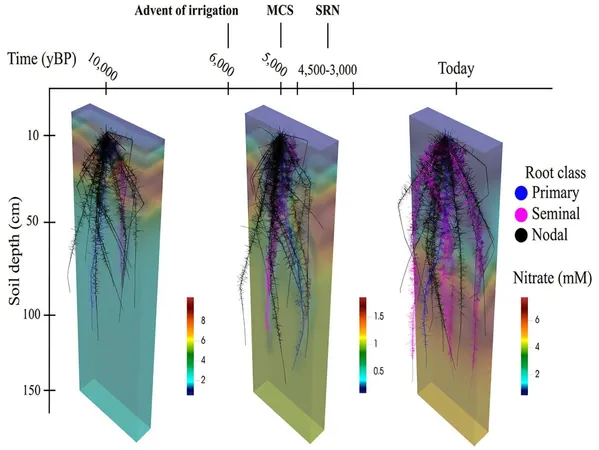
Astronomers Capture Stunning Moment of a New Planet in Action!
2025-07-21
Author: Emily
Witnessing a Cosmic Birth
In an astounding astronomical revelation, scientists have observed a still-forming planet actively shaping the cosmic dust around it, creating stunning spiral patterns in a protoplanetary disc. Utilizing the cutting-edge Very Large Telescope (VLT) from the European Southern Observatory (ESO), researchers have identified what might be the first-ever glimpse of a planet carving out its own space within a disc surrounding a young star.
A Glimpse of Planetary Formation
Francesco Maio, the doctoral researcher leading the study from the University of Florence in Italy, described the historic event detailing how this potential planet candidate is nestled around the star HD 135344B, located a staggering 440 light-years away. This nascent planet is believed to be twice the size of Jupiter, positioned at a distance from its star comparable to that of Neptune from the Sun.
Patterns in Protoplanetary Discs
Historically, astronomers have theorized that the intricate structures within protoplanetary discs, such as rings and spirals, are formed by orbiting baby planets sweeping up material. However, this observation marks a groundbreaking moment—the first time scientists have directly detected a planet in action within these celestial patterns.
Unveiling the Cosmic Sculptor
Earlier observations with another VLT instrument hinted at spiral arms within the disc, but the confirmation of an embedded planet was elusive until now. Utilizing the Enhanced Resolution Imager and Spectrograph (ERIS), the research team identified the potential planet right where theoretical models suggested it should reside—at the base of one of those spiraled formations. This discovery adds a remarkable layer of certainty, as they captured the planet’s own light amidst surrounding materials.
A Parallel Discovery: The Birth of a Companion Object
In another cosmic milestone, scientists have recently applied the same ERIS instrument to study a different young star, V960 Mon. This investigation revealed a mysterious companion object within its protoplanetary disc, with preliminary results indicating it could be either a forming planet or a 'brown dwarf'—an object too massive to be a planet but not quite massive enough to ignite into a star.
Implications for Future Astronomical Studies
If confirmed, the discovery of this companion could signify a leap in understanding how planetary systems form through gravitational instability. These exciting findings may pave the way for future exploration and deeper comprehension of the origins of our own solar system.
A New Era in Planetary Science
As telescopes evolve, astronomers are on the brink of unlocking numerous cosmic secrets. With each discovery, we inch closer to answering the profound questions about how planets, and potentially life, come into existence in the vast universe.









 Brasil (PT)
Brasil (PT)
 Canada (EN)
Canada (EN)
 Chile (ES)
Chile (ES)
 Česko (CS)
Česko (CS)
 대한민국 (KO)
대한민국 (KO)
 España (ES)
España (ES)
 France (FR)
France (FR)
 Hong Kong (EN)
Hong Kong (EN)
 Italia (IT)
Italia (IT)
 日本 (JA)
日本 (JA)
 Magyarország (HU)
Magyarország (HU)
 Norge (NO)
Norge (NO)
 Polska (PL)
Polska (PL)
 Schweiz (DE)
Schweiz (DE)
 Singapore (EN)
Singapore (EN)
 Sverige (SV)
Sverige (SV)
 Suomi (FI)
Suomi (FI)
 Türkiye (TR)
Türkiye (TR)
 الإمارات العربية المتحدة (AR)
الإمارات العربية المتحدة (AR)